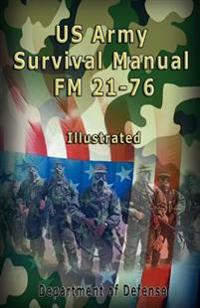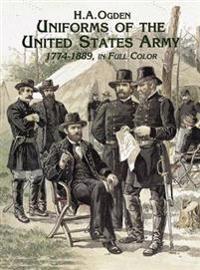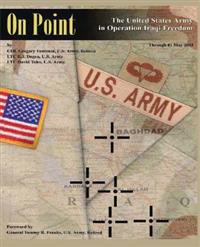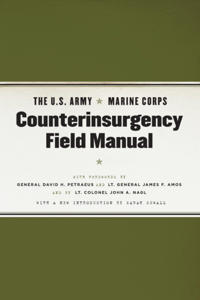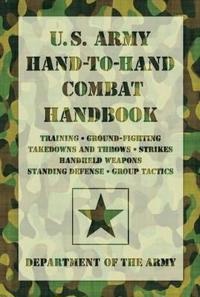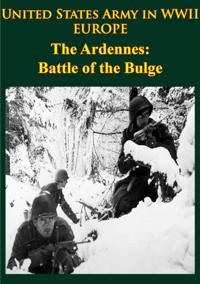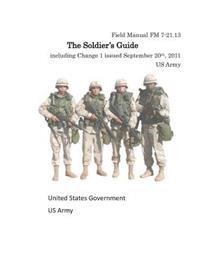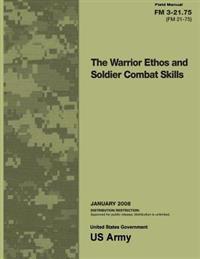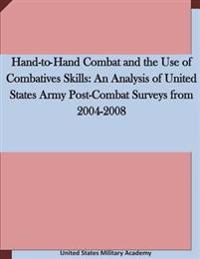US Army Survival Manual (Häftad)
avOf Defense Department of Defense, United States Army The United States Army, U S Army
ISBN: 9789562914482 - UTGIVEN: 2007-05Ranger Athlete Warrior 4.0: The Complete Guide to Army Ranger Fitness (Häftad)
avUnited States Army Ranger Regiment
ISBN: 9781492839811 - UTGIVEN: 2013-09The Fourth Star: Four Generals and the Epic Struggle for the Future of the United States Army (Häftad)
avGreg Jaffe, David Cloud
ISBN: 9780307409072 - UTGIVEN: 201010Great Sioux War Orders of Battle: How the United States Army Waged War on the Northern Plains, 1876-1877 (Häftad)
avPaul L. Hedren
ISBN: 9780806143224 - UTGIVEN: 201208Lasting nearly two years, the Great Sioux War pitted almost one-third of the U.S. Army against Lakota Sioux and Northern Cheyennes. By the time it ended, this grueling war had played out on twenty-seven different battlefields scattered across five states, resulted in hundreds of casualties, cost mil[...]
Inexorable Conflict or Opportunity: The United States and the Middle East (Häftad)
avU. S. Army War College
ISBN: 9781500588151 - UTGIVEN: 2014-07Al-Shabaab: The Threat to Kenya and the Horn of Africa (Häftad)
avUnited States Army War College
ISBN: 9781503101371 - UTGIVEN: 2014-11Uniforms of the United States Army, 1774-1889, in Full Color (Häftad)
avH. A. Ogden
ISBN: 9780486401072 - UTGIVEN: 1998-08Aviators' Clothing of the United States Army Air Forces, 1917-1945 (häftad)
ISBN: 9780786493968 - UTGIVEN: 2015-01From the bitter temperatures of the Arctic to the sweltering jungles of the South Pacific, Army Air Forces personnel flew countless missions in extreme conditions throughout World War II. Providing suitable clothing to various crewmen aboard many different types of aircraft proved a monumental task.[...]
Powell's Records of Living Officers of the United States Army (häftad)
ISBN: 9781143662041 - UTGIVEN: 2010-02Powell's Records of Living Officers of the United States Army
ISBN: 9781344696005 - UTGIVEN: 2015-10On Point: The United States Army in Operation Iraqi Freedom (häftad)
ISBN: 9781494406592 - UTGIVEN: 2013-12Maneuver and Firepower: The Evolution of Divisions and Separate Brigades (Häftad)
avUnited States Army Center of Military Hi
ISBN: 9781507678268 - UTGIVEN: 2015-01A Complete Guide to Military Ribbons of the United States Army, Navy, Marines, Air Force, Coast Guard and Merchant Marine 1861 to 2014 (häftad)
ISBN: 9781884452635 - UTGIVEN: 2014-07The U.S. Army/Marine Corps Counterinsurgency Field Manual (Pocket)
avUnited States Army, United States Marine Corps, David H. Petraeus
ISBN: 9780226841519 - UTGIVEN: 200707When the U.S. military invaded Iraq, it lacked a common understanding of the problems inherent in counterinsurgency campaigns. It had neither studied them, nor developed doctrine and tactics to deal with them. It is fair to say that in 2003, most Army officers knew more about the U.S. Civil War than[...]
U.S. Army Hand-to-Hand Combat Handbook (Pocket)
avUnited States Department of the Army (COR)
ISBN: 9781599219080 - UTGIVEN: 201007This field manual contains information and guidance pertaining to hand-to-hand combat and rifle-bayonet fighting. Hand-to-hand combat is an engagement between two or more persons in an empty-handed struggle or with hand-held weapons such as knives, sticks, or projectile weapons that cannot be fired.[...]
United States Army in WWII - Europe - the Ardennes: Battle of the Bulge
ISBN: 9781782894162 - UTGIVEN: 2014-08[Includes 14 maps and 96 photos]During most of the eleven months between D-day and V-E day, the U.S. Army was carrying on highly successful offensive operations. As a consequence, the American soldier was buoyed with success, imbued with the idea that his enemy could not strike him a really heavy co[...]
United States Army: The Definitive Illustrated History (häftad)
ISBN: 9781402791048 - UTGIVEN: 2011-10Through glorious victories, devastating defeats, and incredible displays of bravery, award-winning author D.M. Giangreco immerses us in the thrilling history of the U.S. Army. From the defeat of British general Charles Cornwallis at Yorktown, to Antietam on the bloodiest day of the Civil War, to D-D[...]
Field Manual FM 3-21.8 (FM 7-8) the Infantry Rifle Platoon and Squad March 2007 (Häftad)
avUnited States Government Us Army
ISBN: 9781468179866 - UTGIVEN: 200703Field Manual FM 7-21.13 the Soldier's Guide Including Change 1 Issued September (Häftad)
avUnited States Government Us Army
ISBN: 9781470018146 - UTGIVEN: 2012-02Field Manual FM 3-21.75 (FM 21-75) the Warrior Ethos and Soldier Combat Skills January 2008 (Häftad)
avUnited States Government Us Army
ISBN: 9781478231554 - UTGIVEN: 2012-07Hand-To-Hand Combat and the Use of Combatives Skills: An Analysis of United States Army Post-Combat Surveys from 2004-2008 (häftad)
ISBN: 9781511636520 - UTGIVEN: 2015-04

